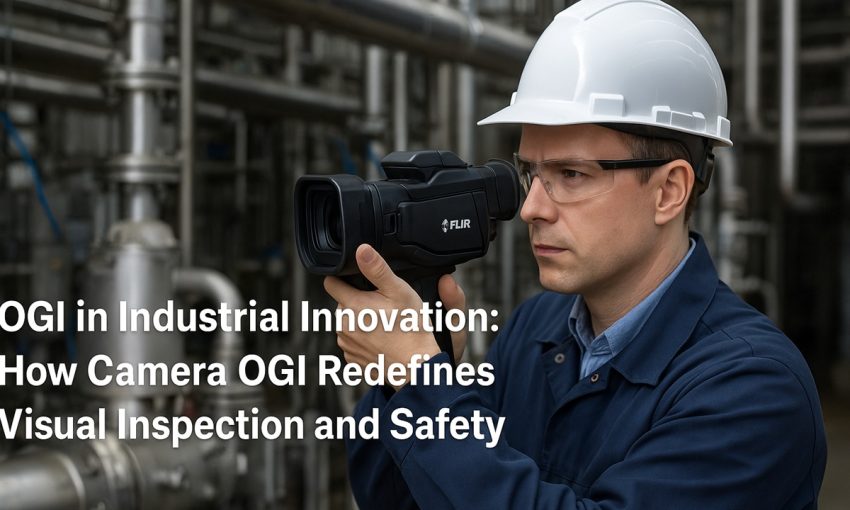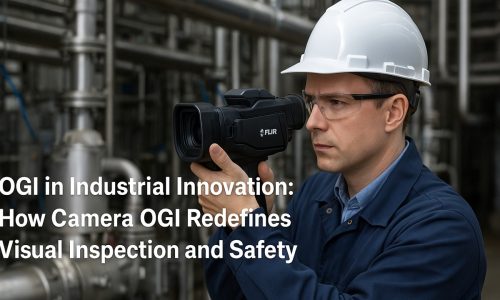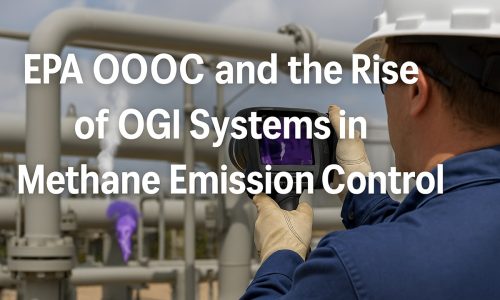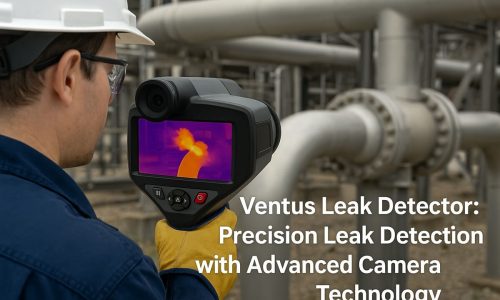Introduction: From Leak Detection to Industrial Transformation
Optical Gas Imaging (OGI) has long been associated with gas leak detection, especially in the oil and gas sector. But over the past decade, OGI technology has quietly evolved into something much broader — a cornerstone of industrial innovation.
Modern Camera OGI systems are no longer limited to methane or hydrocarbon detection. They are transforming how manufacturers, chemical plants, and power producers approach visual inspection, quality control, and worker safety.
With advancements in infrared sensors, AI-powered analytics, and cloud integration, OGI is now part of the Industry 4.0 ecosystem, providing real-time visual intelligence for predictive maintenance and operational excellence.
The Evolution of OGI Technology
Optical Gas Imaging (OGI) was originally developed to visualize gases invisible to the human eye by detecting their infrared absorption. Early systems were used exclusively in high-risk environments, helping technicians locate hazardous emissions.
However, as sensor resolution improved and calibration algorithms advanced, the potential of OGI expanded far beyond environmental monitoring. Today’s Camera OGI systems are capable of detecting micro temperature variations, surface imperfections, and pressure anomalies — allowing them to serve as multipurpose diagnostic tools across industries.
In essence, OGI has evolved from a compliance technology into a strategic asset for smart factories and modern infrastructure.
Beyond Gas: OGI in Visual Inspection and Quality Control
In many manufacturing sectors, Camera OGI now plays a role in non-destructive testing (NDT) — enabling companies to inspect products, pipelines, or machinery without physical contact or operational interruption.
Applications Include:
-
Sealing Verification: Detecting microscopic leaks in sealed systems (pharmaceutical packaging, refrigeration units, aerospace components).
-
Thermal Uniformity Analysis: Identifying uneven heating or cooling zones in industrial furnaces or production lines.
-
Material Integrity Checks: Monitoring for stress points, cracks, or insulation defects using thermal contrast imaging.
-
Cleanroom Monitoring: Detecting chemical vapors or particulate flow disruptions in semiconductor and biotech facilities.
These new use cases demonstrate that OGI’s precision and non-invasive capabilities make it ideal for industries where accuracy, safety, and uptime are mission-critical.
Camera OGI as a Predictive Maintenance Tool
Predictive maintenance has become one of the defining features of Industry 4.0, and OGI technology is at its core.
By capturing subtle thermal variations, pressure fluctuations, or chemical releases invisible to standard cameras, Camera OGI enables early detection of equipment degradation before failures occur.
How it works:
-
The OGI camera scans critical systems (valves, compressors, pipelines, electrical cabinets).
-
AI software analyzes visual and infrared data for deviations from normal patterns.
-
Anomalies trigger alerts, allowing maintenance teams to act before breakdowns happen.
This proactive approach reduces unplanned downtime, lowers maintenance costs, and extends the lifespan of assets — while also improving workplace safety.
In short, Camera OGI turns inspection from reactive to predictive, creating smarter, safer, and more efficient operations.
OGI and Worker Safety
Industrial safety is about more than compliance; it’s about prevention. OGI systems are now integral to visual safety monitoring, allowing operators to detect risks before they become incidents.
For example:
-
Chemical Exposure Prevention: OGI cameras can detect invisible toxic vapors or refrigerant leaks that pose health risks.
-
Fire Hazard Detection: Identifying overheating components or flammable vapor buildup before ignition.
-
Remote Monitoring: Allowing inspections without exposing workers to hazardous areas, confined spaces, or high temperatures.
When integrated with AI and automated surveillance, Camera OGI becomes part of a digital safety network — one that continuously monitors the plant environment and alerts operators in real time.
OGI in the Context of Industry 4.0
In the era of digital transformation, data is the new oil — and Camera OGI generates some of the most valuable data of all: visual data.
Modern OGI systems connect directly to cloud platforms, IoT sensors, and digital twins, providing a comprehensive view of industrial performance.
Integration Examples:
-
AI Analytics: Automatically identifying anomalies in OGI footage.
-
IoT Connectivity: Synchronizing OGI readings with pressure, vibration, and temperature sensors.
-
Digital Twin Modeling: Feeding OGI visuals into 3D simulations to track equipment health.
-
Cloud Reporting: Uploading inspection data for remote verification and compliance documentation.
This seamless integration transforms OGI into a key enabler of smart manufacturing, where machines and systems communicate autonomously to optimize efficiency and safety.
Environmental Monitoring and Sustainability
Even as OGI expands into industrial innovation, its environmental roots remain relevant. Many companies now use Camera OGI as part of their broader ESG strategy, combining safety, efficiency, and sustainability.
For example, detecting leaks in refrigeration or chemical systems not only prevents safety hazards but also reduces greenhouse gas emissions and energy waste.
As corporate sustainability metrics become tied to operational transparency, OGI offers visual, verifiable proof of environmental responsibility — something investors, regulators, and customers increasingly demand.
Comparing OGI with Other Inspection Technologies
| Feature | Thermal Camera | Acoustic Sensor | Camera OGI |
|---|---|---|---|
| Detects gases | ❌ No | ✅ Limited | ✅ Yes (visual) |
| Detects thermal variance | ✅ Yes | ❌ No | ✅ Yes |
| Visualizes leaks | ❌ No | ❌ No | ✅ Yes |
| Non-contact inspection | ✅ Yes | ✅ Yes | ✅ Yes |
| Integration with AI/IoT | Moderate | Low | High |
| Ideal use cases | Heat mapping | Pressure leak detection | Visual inspection, safety, predictive maintenance |
As this comparison shows, OGI systems offer the broadest range of capabilities — combining the strengths of multiple inspection tools into one platform.
The Future: AI-Powered OGI Systems
The next generation of OGI systems will merge hardware precision with artificial intelligence. Machine learning algorithms can already identify leak patterns, classify anomalies, and even quantify emission rates.
Future developments will include:
-
Autonomous Drones – Equipped with Camera OGI for remote inspection of large industrial sites.
-
AI-Based Visual Diagnostics – Automatically flagging potential issues from live footage.
-
Integrated Compliance Engines – Generating inspection reports aligned with ISO and EPA standards.
-
Augmented Reality (AR) Interfaces – Overlaying live OGI visuals onto worker displays for real-time guidance.
This convergence of OGI, AI, and automation marks the next leap forward in industrial innovation.
OGI — The Eyes of the Modern Industry
From its origins as a specialized leak detection tool, OGI technology has evolved into a versatile platform driving the future of industrial safety, efficiency, and sustainability.
The modern Camera OGI provides not only a window into invisible emissions but also a real-time diagnostic interface for smarter decision-making. Whether ensuring product integrity, monitoring worker safety, or predicting system failures, OGI is becoming the eyes of modern industry.
As factories, power plants, and refineries transition to Industry 4.0, OGI systems will remain essential — bridging the gap between what we can see and what we need to know.





